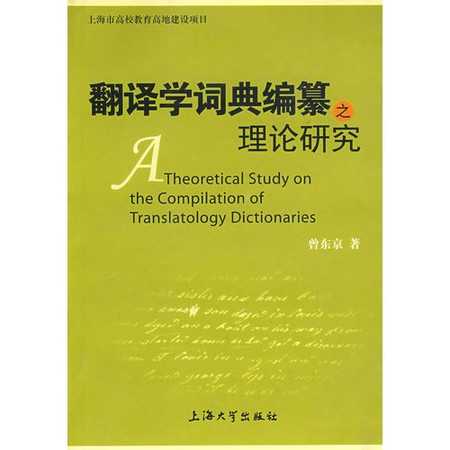《英語為源語言詞典編纂中的用戶友善問題》是2007年復旦大學出版社出版的圖書。
基本介紹
- 書名:英語為源語言詞典編纂中的用戶友善問題
- ISBN:9787309055085
- 出版社:復旦大學出版社
- 出版時間:2007
- 裝幀:平裝
- 開本:32開
圖書信息,內容簡介,圖書目錄,
圖書信息
出版社: 復旦大學出版社; 第1版 (2007年6月1日)
叢書名: 復旦大學外國語言文學博士文庫
平裝: 185頁
開本: 32開
ISBN: 9787309055085
條形碼: 9787309055085
尺寸: 20 x 13.6 x 1 cm
重量: 200 g
內容簡介
英語詞典研究歷來較為偏重從編纂者視角來評判一本詞典的好壞,本書則將計算機技術中的“用戶友善”概念運用到雙語詞典編纂中,認為讀者、用戶視角在實現詞典價值方面同樣重要。本書還為“詞典編纂”這門實踐性很強的學科找到了接受理論、交際理論、二語習得理論、認知科學和市場行銷理論中可以借鑑的理論依據,並全面總結了英語為源語言詞典迄今為止在“用戶友善”方面的“最佳實踐(best practice)”及電子媒介英語為源語言詞典在“用戶友善”方面的獨到之處。
本書為英文版。
圖書目錄
Abstract
中文摘要
Introduction
I.From user to editor,and then back to user
II.A review of prefaces to dictionaries with English as the source language
Theoretical Background
I.Reception theory and user-friendliness in making dictionaries with English as the source language
1.Reception theory
2.Reader’S role in reception theory
3.What does it mean for makers of dictionaries with English as the source language
II.Text linguistics,theory of communication and user.friendliness in making dictionaries with English as the source language
1.Dictionary as text
2.Communication theories
3.The dictionary—as—text model
4.What does it mean for makers of dictionaries with English as the source language
Ⅲ.Second language acquisition and user-friendliness in making dictionaries with English as the source language
1.Distinction between acquisition and learning,hence the distinction between dictionaries for L1 learners and those for L2 learners
2.Dictionaries for L1 or L2,for comprehension or for production?
3.Lessons from language transfer research
4.High—frequency words or low—frequency words.which group gets first priority?
5.The Natural Order hypothesis and the Comprehensible Input hypothesis
IV.Cognitive sciences and user-friendliness in making dictionaries with English as the source language
1.Lessons from the Affective Filter hypothesis
2.Lessons from learning style research
3.Lessons from the constructivist school of cognitive psychology
4.Lessons from cognitive linguistics
V.Marketing theories and user-friendliness in making dictionaries with English as the source language
1.Five Forces Model applied to English dictionary publishing
2.Product differentiation as an English dictionary strategy
3.Identifying the right market segment
Presumably Best Practice in Making Paper-and--Ink Dictionaries with English as the Source Language User-Friendly
I.User-friendliness in the outside matter
1.Prefaces
2.User guides
3.Illustration
4.Appendices
5.A miscellany
II.User-friendliness in the macrostructure
1.Selection of the word list based on frequency
2.Selection of the word list based on the theory of semantic fields
3.Selection of the word list determined by targeted audience
4.Inclusion of new words and new meanings of existing vocabulary
5.Access structure
III.User-friendliness in the microstructure
1.Pronunciation
2.Sense ordering
3.Defmition
4.Illustrative examples
5.Grammatical and pragmatic information
User-Friendliness Embodied in Electronic Dictionaries with English as the Source Language
I.Dictionaries in CD-ROM form
II.Online dictionaries as represented by OED Online
1.Easy accessibility
2.“Transparency”
3.Customized infraction
4.Currency
5.Cost—effectiveness
Ⅲ.Handheld electronic dictionaries
User Research and User Education
I.User research
1.Dimensions of user research
2.Methods of user research
3.Lessons from the business world
II.User education
1.Purchasing guide
2.The use of the dictionary
Conclusion
Reference Works
Lexibibliograph:Dictionaries Mentioned in the Dissertation
Webliograph:Websites Mentioned in the Dissertation

